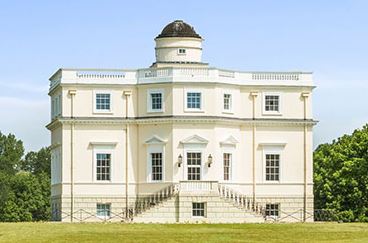In 1769, King George III commissioned the observatory in Kew, Richmond, Surrey, primarily for conducting astronomical observations. In particular, it was used to observe the transit of Venus on the 3rd of June 1769. A few years later, in 1772, it found another purpose, the testing of watches, or more precisely, one watch in particular. Between May and July 1772, John Harrison‘s H5, a replica of the renowned H4 watch taken by Harrison’s son on the famous voyage to Jamaica, underwent testing at the King’s Observatory. The H5 performed extremely well in testing conditions. This testing was to be the precursor to what would be known as the Kew Observatory watch trials.
In 1884, trials commenced on less prestigious watches at the Kew Observatory under the supervision of the Kew Committee of the Royal Society. Their objective was to rate watches and box chronometers using criteria similar to those employed by observatories in Geneva and Yale. Over time, the Kew trials expanded to include timepieces with complications like chronographs. Initially, this expansion was prompted by a request by the Cyclists Union. This later served the Metropolitan Police, aiding them in conducting automobile speed checks.
Initially, the primary goal of the Kew watch trials was to champion English watches and spur technical advancements, likely with the goal of showcasing the superior quality of English timepieces in contrast to foreign competitors. However, Swiss watchmakers recognised an opening to improve their reputation in one of their key export markets. They promptly began submitting watches for the trials and swiftly emerged as dominant contenders, ultimately dominating the results. This was part of the process that made the Swiss-made brand a global success.
Kew certificate
Watches could be submitted for trial in one of three categories: A, B, or C. Marks were assigned based on performance, and watches that successfully completed the trial received a certificate indicating the category in which they had been tested, thus earning Kew A, B, or C certificates. The Class A trial stood out as the most rigorous and competitive, with its results being analysed and often utilised in advertising campaigns.
While the Class B and C trials were comparatively less stringent, they still posed significant challenges for watches of that era. Therefore, earning a Kew certificate in any class was highly regarded in the watchmaking industry. The fees for the three classes, were one guinea (21 shillings), 10s 6d (10 shillings, 6 pence) and 5s 6d (5 shillings, 6 pence) respectively. If a watch failed to pass certification in the class for which it was registered, only half the fee was charged.
An instrument which passed the tests was awarded a “Kew Certificate”, a hallmark of excellence. For the years 1885 to 1890, English companies held the record for the highest number of marks in Class A. However, in 1891 a Swiss watch entered by Stauffer & Co. took the record with 91.6 marks. This was a feat that Stauffer was quick to advertise. In November 1912, watch testing was transferred to the National Physical Laboratory at Teddington. However, the certificates awarded to successful watches continued to be called “Kew certificates”.
The testing process lasted for many days, from 16 to 45. Each movement was tested in multiple positions and various temperatures. The tolerances for error in the Class A trials were much finer than any other standard, including the modern COSC standard. The testing requirements for each class is specified below.
Class A
The Class A trial was performed over 45 days divided into 8 periods of 5 days. The rate on the first day was not recorded. Additionally, a day was allowed between temperature changes to allow the watch to stabilise at the new temperature. In each period the rate of the watch was checked 5 times daily.
Class A Trial Schedule
Period Position Temperature
1 Pendant up: 67°F (room temperature)
2 Pendant right: 67°F (room temperature)
3 Pendant left: 67°F (room temperature)
4 Dial-up: 40°F (refrigerator cold)
5 Dial-up: 67°F (room temperature)
6 Dial-up: 83°F (oven heat)
7 Dial down: 67°F (room temperature)
8 Pendant up: 67°F (room temperature)
To pass the Class A trial, a rate of a watch had to meet the following conditions:
The mean difference of daily rate, under the same conditions of position and temperature, had in no instance exceeded 2 seconds.
The mean daily rate in a vertical position (pendant up/left/right) had differed from the mean daily rate in a horizontal position (dial-up/down) by less than 5 seconds. In any other position, it should be less than 10 seconds.
The mean daily rate had been affected by changes in temperature by less than one-third of a second per 1° Fahrenheit.
Class B
The Class B trials were a quicker and slightly easier way for a good-quality watch to get a Kew certificate. Class B trials were conducted over 31 days in two positions, pendant-up and dial-up, and three temperatures, room, refrigerator and oven. The maximum allowed variation in daily rate was 2 seconds in any one position, 10 seconds between horizontal and vertical positions and 1/3 of a second per degree Fahrenheit.
Class C
Class C trials were conducted over 16 days. This was at room temperature only and two positions, eight days pendant up and eight days dial-up. The maximum allowed variation in daily rate was 2 seconds in any position and 10 seconds between two positions. Class C trials were discontinued in 1897 due to a lack of demand.
Modern trials
The Kew Observatory played a crucial role in advancing the accuracy of mechanical timepieces, propelling the mechanical watchmaking industry toward greater precision. Consequently, modern high-quality mechanical watch movements boast exceptional accuracy levels. Nevertheless, no mechanical movement can rival the precision of a quartz movement. Consequently, chronometer certification ceased in the late 1960s and early 1970s with the emergence of quartz watch movements.
Related content
King’s Observatory at Wikipedia.
Kew Observatory at Vintage Watch Straps.
